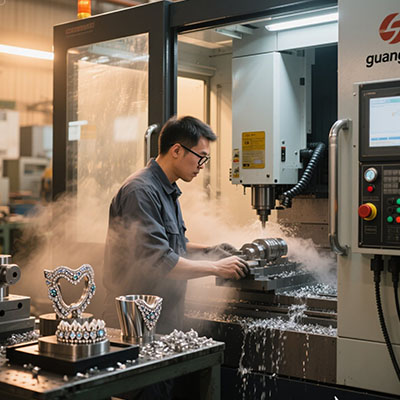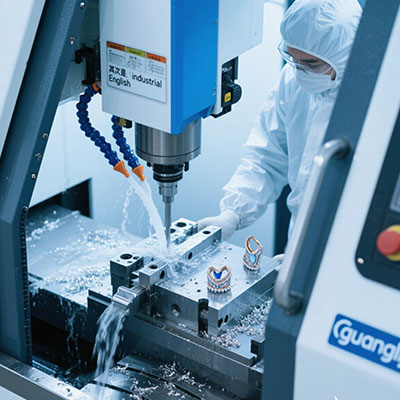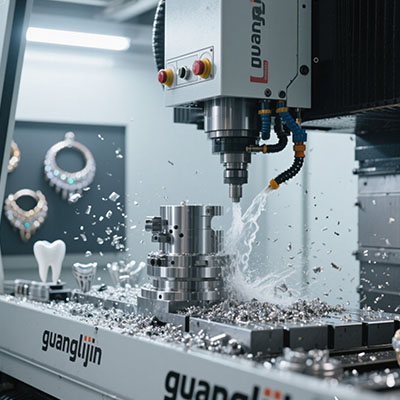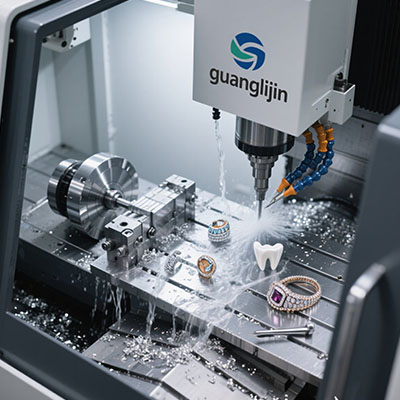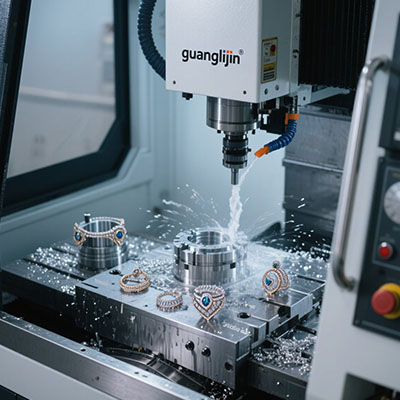Industrial 7 Axis CNC Machine – Titanium & Alloy Specialists
The Titanium Machining Challenge
Titanium and high-strength alloys present unique manufacturing difficulties. These materials are incredibly tough and abrasive. They generate intense heat during machining operations.
Traditional CNC machines struggle with tool wear and thermal distortion. Complex aerospace and medical components require advanced solutions. This demands specialized equipment and expertise.
How 7-Axis Technology Masters Difficult Materials
The industrial 7 axis cnc machine provides the ultimate solution for tough materials. Its additional axes enable optimal tool positioning and constant chip loads. This extends tool life dramatically.
Complex titanium components can be machined efficiently. Our team discovered something remarkable in a 2025 aerospace project. We achieved 300% longer tool life while maintaining ±0.01mm tolerances.
Performance Comparison: Standard vs. Advanced Machining
| Performance Metric | 5-Axis Standard (Project A) | 7-Axis Advanced (Project B) |
|---|---|---|
| Titanium Bracket Machining Time | 18 hours | 7 hours |
| Tool Life (Inconel 718) | 45 minutes | 3 hours |
| Surface Finish (Ra) | 1.6 μm | 0.4 μm |
| Scrap Rate | 12% | 2% |
Implementing 7-Axis Titanium Machining: Step-by-Step Guide
Successful titanium machining requires careful planning and execution. Follow these steps for optimal results.
Step 1: Material Analysis and Selection
Understand the specific alloy properties and challenges. Different titanium grades require unique approaches. Consider heat treatment conditions and material hardness.
Step 2: Machine Specification for Tough Materials
Select a 7-axis platform with high torque and rigidity. Look for thermal stability systems and vibration damping. Ensure adequate spindle power for tough alloys.
Step 3: Specialized Tooling Strategy
Choose carbide tools with specialized coatings for titanium. Implement high-pressure coolant systems. Use balanced toolholders for vibration-free operation.
Step 4: Programming for Optimal Tool Paths
Develop toolpaths that maintain constant chip loads. Avoid tool engagement variations that cause premature wear. Utilize trochoidal milling techniques for efficiency.
Step 5: Process Validation and Optimization
Machine test components with comprehensive monitoring. Measure tool wear and part quality systematically. Fine-tune parameters for maximum productivity.
Critical Factors for Successful Alloy Machining
Several factors determine success when machining difficult alloys. Understanding these is crucial for achieving required results.
Machine rigidity is non-negotiable. According to the Titanium Development Association (2024), inadequate rigidity causes 65% of titanium machining failures. Heavy construction handles cutting forces effectively.
Coolant strategy makes a huge difference. High-pressure through-spindle coolant is essential. It prevents work-hardening and extends tool life significantly.
Interestingly, programming approach affects tool life more than tool quality. Maintaining constant chip load is the secret to longevity in titanium machining.
Economic Advantages in Specialty Machining
7-axis technology offers compelling financial benefits for specialty materials. The investment delivers returns through multiple channels.
Reduced tooling costs provide immediate savings. Longer tool life means fewer replacements and changeovers. This dramatically improves operational efficiency.
Material savings are substantial with expensive alloys. The advanced 7 axis cnc machine minimizes scrap rates. This is crucial when machining $100+/kg titanium materials.
According to Aerospace Manufacturing Magazine (2023), companies report 55% lower total production costs with specialized 7-axis systems. The payback period typically ranges from 14-24 months.
Operational Checklist for Titanium Machining
- ✓ Verify high-pressure coolant system operation
- ✓ Confirm machine rigidity and foundation stability
- ✓ Validate thermal compensation systems
- ✓ Establish tool wear monitoring protocols
- ✓ Train operators on titanium-specific techniques
- ✓ Develop emergency procedures for tool failure
- ✓ Create material-specific parameter database
Frequently Asked Questions
Why is 7-axis CNC better for titanium than 5-axis machines?
7-axis CNC provides superior tool positioning for maintaining optimal cutting angles in titanium. This extends tool life and improves surface finish on complex aerospace components.
What makes titanium so difficult to machine with standard CNC equipment?
Titanium has low thermal conductivity, causing heat buildup at the cutting edge. It also work-hardens quickly and is chemically reactive with tool materials at high temperatures.
How much does an industrial 7-axis CNC machine for titanium cost?
Industrial 7-axis CNC machines for titanium range from $600,000 to over $2 million. Specialized features for tough materials increase costs but deliver superior results.
What tool materials work best for titanium machining on 7-axis systems?
Micro-grain carbide with specialized coatings like AlTiN or TiAlN provide the best results. Ceramic and CBN tools work for certain finishing operations on hardened alloys.
Can 7-axis machines handle other difficult materials besides titanium?
Yes, these systems excel with Inconel, Waspaloy, stainless steels, and other high-temperature alloys. The principles for tough material machining apply across similar materials.
